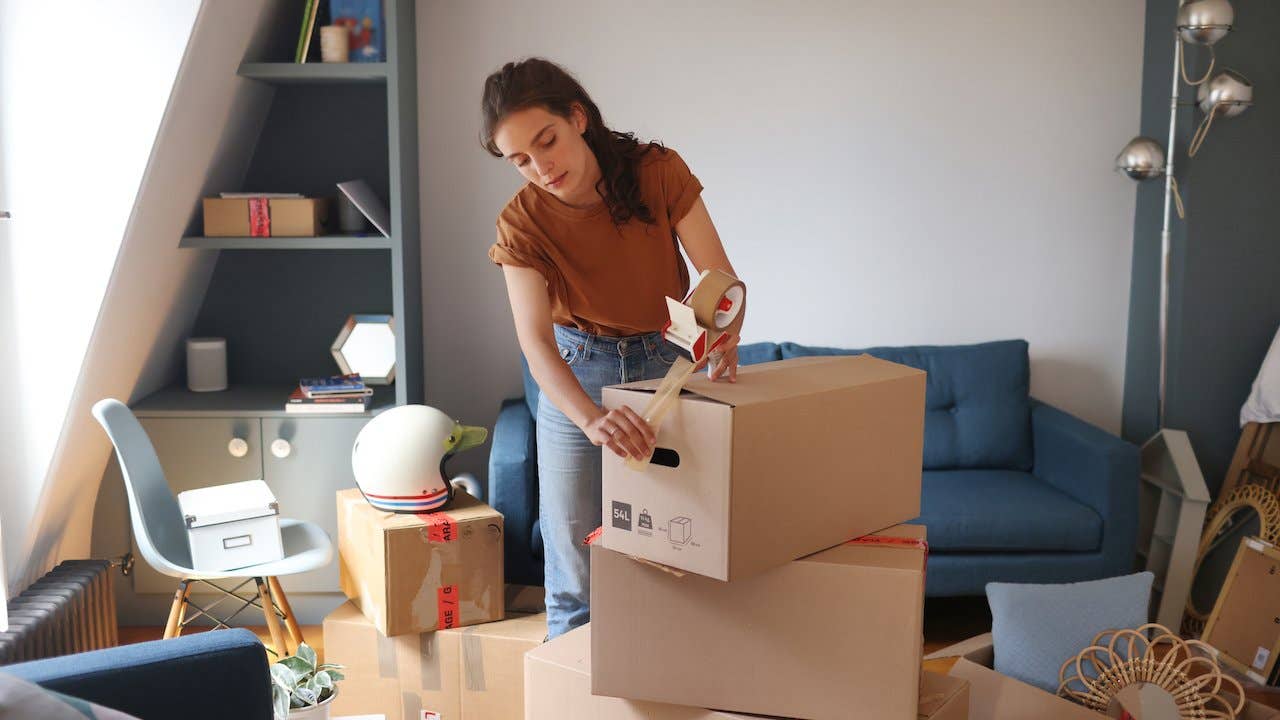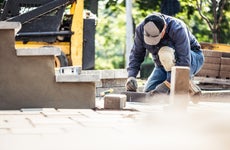Showing your home to sell while still living in it

The Bankrate promise
At Bankrate we strive to help you make smarter financial decisions. While we adhere to strict , this post may contain references to products from our partners. Here's an explanation for .
The decision to sell your home is a big one. Even in a seller’s market, it can be stressful — especially if you’re still living there while it’s being shown. How do you prepare for a parade of strangers, all potential buyers, traipsing through your home while you’re still holed up there? And stay sane in the process? Read on for tips on how to sell your home while still living in it.
Declutter, deep clean and depersonalize
Before hosting your first showing, take the time to make it ready for the spotlight. There are several steps you can take to make your home more appealing to prospective buyers. Home shoppers want to be able to visualize themselves in your space, so start by depersonalizing it. That means removing family photos, kids’ toys, vacation souvenirs and more. The goal is to make your home look neutral so that buyers can imagine how they would use and occupy the space.
First appearances are also critical when selling your home, so you may also want to freshen up the landscaping. Not all updates and repairs are worth making when you list your house, but sprucing up its curb appeal doesn’t have to be expensive — just a few potted flowers and fresh paint on the front door can go a long way toward making house-hunters feel welcome.
Of course, the interior matters, too. Having your home professionally cleaned will help it look its best to buyers. And it’s tough while you’re still living there, but try to maintain that cleanliness throughout the selling process. You want to keep the home photo-worthy for as long as possible, even after you’ve had those professional photos taken for the listing.
Storage options for items you need to stash away
Don’t approach this part of your home-selling process as drudgery. Think of it as a bonus round of advance packing — a gift to the future you, who just sold your home and is ready to pack up and move out. Box up as much as you can while you’re prepping your home to be viewed by potential buyers, and make a plan for where you can keep the boxes for a while. Storage units and friends’ and relatives’ basements or attics are all good options. The main thing is to get the boxes out of your own house, if at all possible.
Prepping your home to sell while living in it
We all know the principles of home staging, even if we don’t know the specific term. Thanks to Marie Kondo and HGTV, the idea that a clean, clutter-free space translates into peace of mind is entrenched in our cultural psyche. Super-size this concept with some broadly appealing styling, and you’ve got the marketing tool known as home staging. Employed effectively, it can make a property sell faster, and for a higher price.
But that’s in vacant properties. What if you are still living there? What can stay, what should be hidden away and what absolutely must go?
What you can keep on display
To give your home the best shot for a top-dollar sale, it needs to be picture perfect — literally. Before potential buyers visit your home, they’ll evaluate it based on online photos. So, before listing photos are taken, pare everything down to your essentials.
It’s OK to keep furniture and artwork in place, so long as they don’t feel dated or quirky. But be sure to hide away items that are clearly personal. “Potential buyers want to be able to see themselves living in the space, not you,” says Birgit Anich, CEO and creative director of Connecticut-based BA Staging & Interiors. Anich recommends ditching small accessories and tchotchkes, too. “Bigger objects read so much better in a photograph,” she says. “Little things distract the eye, so the brain is not focusing on the most important components of the room.”
Of course, it’s not possible to pack away absolutely everything. Some rooms, like the kitchen, still need to function in an everyday way. Anich suggests choosing one or two appliances that you truly use on a daily basis to stay out on the counter — a coffee maker and a toaster, for example. And they should be sparkling clean. “Every object tells a story,” she says. “If the toaster looks banged-up and old, that will make a negative impression on potential buyers. They may think to themselves, ‘If the seller isn’t taking care of the toaster, what else isn’t being taken care of?’”
What you should hide away for safekeeping
With lots of people coming in and out, you likely have some items that you’ll want to not just stash away but lock away. Think things that have special value, whether sentimental or monetary, and that pertain to privacy and safety: jewelry, documents with identifiable info, prescriptions and more.
Another item that should be locked up: your kitchen knife block. It may seem extreme, but for the safety of the real estate agent showing your home, it’s an easy precaution to take. “I always say, ‘Out of sight, out of mind,’” says Anich.
What you should never, ever have in the house
Apologies to all the animal lovers, but the top thing to never have in your house while it’s being shown is a pet. Many potential buyers do not love Rover the way that you do. And they won’t love any signs of him, either: Make sure that food and water bowls, litter boxes and any pet-related things are well out of sight before buyers visit your home. And vacuum well to get rid of any pet hair. “You want to minimize any touchpoints that might remind potential buyers that pets live on the premises,” says Anich.
Other things to never have in your house while you’re selling it include objects with any religious or political affiliations. However strong your convictions, buyers may not share them, and these items may prevent them from being able to see the space as theirs.
Likewise, remove anything that might make it seem as if you’re concealing a problem. Multiple scented candles or air fresheners, for example, could be construed as red flags, making buyers wonder what odor they are covering up.
Reducing stress while showing your home
Try not to think about the showing process as people invading your space. Consider the house a product for sale rather than your home. Packing and storing a lot of your stuff is actually a good thing — it’s hugely helpful to adopt the mentality that, essentially, you’ve already moved out.
During this transitional period, be vigilant about having minimal impact on a room when you use it, and clean up after yourself as you go. Get family members on board, too, if possible.
It helps immensely to have a pro guiding you through the showing and selling process. Work closely with an experienced local real estate agent: Agents don’t just understand the housing market’s ins and outs, they also understand the ins and outs of how to make your home look its best and appeal to prospective buyers. And they can coordinate with your schedule to make the showings as non-disruptive to your daily life as possible.
FAQs
-
There are some advantages to private showings. Open houses often attract people who are just curious but have no interest in buying, whereas someone who takes the time to schedule a one-on-one showing of your home is more likely to be a serious buyer. An open house can still be useful for getting the word out, however, especially if there hasn’t been a great deal of traffic for private showings.
-
One important final step to take before house-hunters arrive is to make sure window shades are open to let in as much natural light as possible. It’s also a good idea to ensure all trash has been emptied and surfaces have been cleared, including kitchen countertops. Wipe down bathroom sinks, close toilet lids and remove any pet food bowls as well. Ask your Realtor if there’s anything you feel unsure about.
-
No, clearing out is the best approach. Buyers generally don’t feel as comfortable viewing a home when its owner is there, and they may feel guarded in what they can say or ask in your presence. In addition, staying during showings raises the risk that you could inadvertently say something that may negatively influence prospective buyers.
Related Articles



